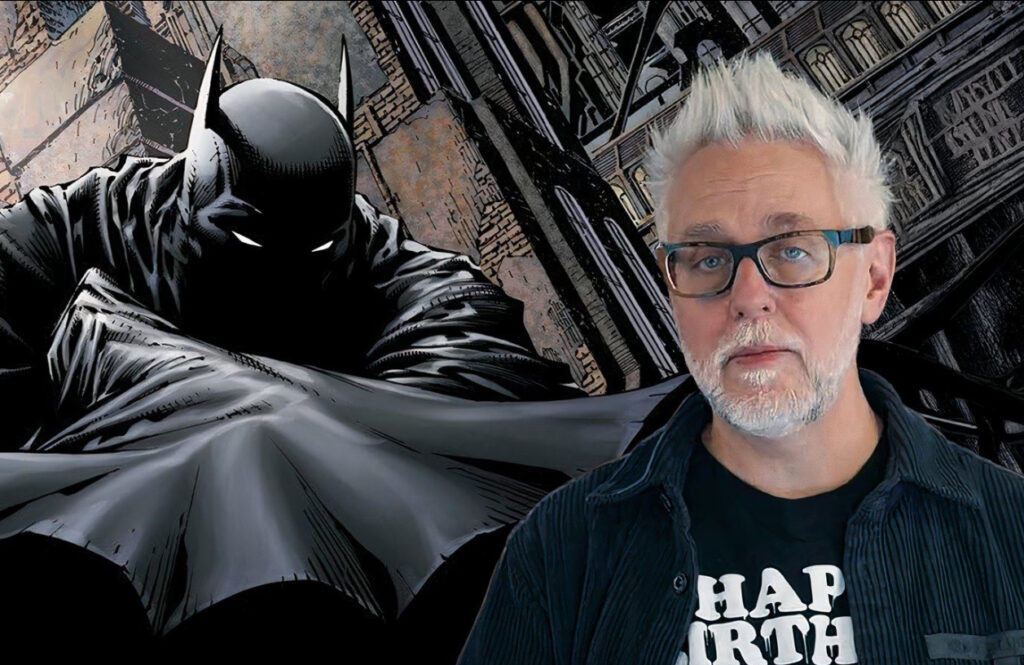There is a storm brewing over Gotham—not one of violence, corruption, or villains with chaotic grins, but one of creative uncertainty, tonal balance, and cinematic expectation. James Gunn, newly anointed co-chair of DC Studios, recently pulled back the curtain to share a candid confession that’s echoing across fan forums and production boardrooms alike: “Batman is my biggest issue in all of DC right now.” With that, the conversation around Gotham’s shadowy protector reignited—less about who wears the cowl and more about what the cowl means in this new, rebooted DC Universe.
In a sea of superheroes, Batman remains DC’s crown jewel, its most lucrative and mythologically dense property. He is the night, the vigilante, the tragedy-fueled detective who walks the line between justice and obsession. Yet in an age where cinematic universes are expected to cohere, where continuity threatens creativity, Gunn’s dilemma is emblematic of a larger issue: how to fit the most iconic, brooding loner of all time into a shared narrative landscape that demands teamwork, tonal unity, and a whole lot more than just cool gadgets and growling voiceovers.
As Gunn himself clarified in a recent roundtable discussion, “I’m not interested in a funny, campy Batman.” The statement reads as both a manifesto and a rejection—drawing a sharp line between the character’s future under Gunn’s stewardship and any echoes of Adam West’s 1960s slapstick or even Joel Schumacher’s neon-lit detours of the late 1990s. Yet this declaration raises the stakes for what is being envisioned. Gunn, known for his off-kilter humor, emotion, and ensemble dynamics in franchises like Guardians of the Galaxy and The Suicide Squad, must now pivot to something more solemn. His Batman cannot be a punchline, a meme, or an ironic counterweight to Superman. He must be real. Serious. Canonized. And yet—still fresh.
The Problem with the Bat
The problem, at its core, is not Batman himself. It’s that he has been too many things to too many people for too long. Over the past four decades, audiences have experienced a spectrum of Batmen, from the gothic horror and operatic scale of Tim Burton’s version to Christopher Nolan’s gritty realism and, most recently, Matt Reeves’ noir detective in The Batman (2022). Robert Pattinson’s take—saturated in dread, unpolished, and emotionally raw—was lauded for diving back into the detective genre, anchoring the character with introspection over spectacle.
But here’s where Gunn’s puzzle begins: The Batman and its forthcoming sequel exist outside of Gunn’s DCU continuity. They’re Elseworlds stories—parallel, prestige productions that allow artists autonomy, while Gunn’s rebooted universe (which begins with Superman in 2025) must hold its own, interconnected weight. This means two Batmen potentially existing simultaneously—an idea not foreign to comics but notoriously complicated in live-action cinema.
And more than that, Gunn has to differentiate his Batman without undermining Reeves’. He must make a Batman who is neither campy nor derivative, grounded but not redundant. A Batman with emotional grit, psychological depth, and thematic urgency that still fits inside a broader heroic pantheon populated by aliens, time travelers, talking gorillas, and Lanterns forged from willpower.
This is no small feat. Batman resists simplification. He works best in backdrops, in isolation, as the ghost that haunts Gotham’s alleys. And yet, Gunn’s universe demands coherence—a Batman who can stand in the same room as Booster Gold and Mister Terrific without collapsing under tonal whiplash.
The Mythos vs. The Machine
At the root of the challenge lies a deeper editorial question: What is Batman for?
Is he vengeance or justice? A warning or a solution? A broken man coping with grief, or a paragon of willpower and detective intellect?
In the comics, he’s been all these things and more. But the problem of cinematic Batman is that his mythos is so rich—and his image so pervasive—that anything less than profound risks feeling shallow, even cynical. Audiences now demand more than spectacle; they want pathos, subtext, evolution. Gunn’s desire to avoid a “funny, campy Batman” acknowledges this, but it also implies a fear: that mishandling this character could unmoor the credibility of the entire universe he’s tasked with building.
And rightly so. Every Batman iteration shapes an era. Burton’s Gothic iconography carved the way for superhero films to be dark. Nolan’s trilogy offered a modern myth of realism, spawning endless imitators. Snyder’s Batfleck leaned into brutality and symbolic rage. Reeves’ interpretation channeled dread and institutional decay. Each carved a different silhouette in the fog of Gotham’s skyline. Gunn’s challenge is to carve yet another—and one that does not fade into parody, repetition, or irrelevance.
The New Caped Crusader?
So who is the Batman of the DCU?
We know a few hints. Gunn’s The Brave and the Bold, set to introduce Bruce Wayne and his son Damian, leans on Grant Morrison’s comic run—a postmodern take on legacy, fatherhood, and the balance between darkness and absurdity. Damian Wayne is a wildcard: an assassin-raised child suddenly given a cape and a conscience by a father he barely knows. If done right, this is fertile ground for a Batman we haven’t quite seen before—a mentor, conflicted but not broken, sculpting morality from chaos while trying not to lose himself in the process.
This approach also allows for what Gunn does best: emotional character dynamics laced with philosophical weight. Batman, as a reluctant father figure, forced to confront his own demons while raising a son bred for murder, is a compelling lens through which to reinvent the character without stripping him of his essence. No camp, no irony—just human fragility behind bulletproof armor.
But tonal management remains the crux. The risk is not in Damian’s wildness or Batman’s seriousness, but in the collision of both within a wider universe that features Plastic Man and Swamp Thing. A Batman too grounded might jar with the rest of the DCU’s spectrum. A Batman too adjusted might undercut the thematic gravity fans expect.
In many ways, this Batman must be a bridge—a character who grounds the world in moral realism while adapting to its increasing fantastical escalation.
The Cultural Gravity of Batman
Batman, more than any other hero, has become America’s Shakespearean figure. A character endlessly revisited, reinterpreted, and remodeled for each generation’s neuroses and fears. Post-9/11 Batman was obsessed with surveillance (The Dark Knight), while post-pandemic Batman was introspective and cynical (The Batman). Gunn’s Batman must now respond to a generation jaded by franchise fatigue, traumatized by systemic failures, and yearning for meaningful transformation.
He must feel earned. Not just another billionaire with tech and trauma, but someone whose inner world resonates on a level beyond iconography.
This also means casting matters. The next Bruce Wayne cannot be generic. He must carry weight in his voice, eyes, and gait. A performer who can portray pain without melodrama, detachment without apathy, brilliance without arrogance. Not an action star with a square jaw, but an actor with gravitas—someone who can believably anchor a universe and carry a fractured relationship with a bloodthirsty son.
And it must all feel urgent. Batman can no longer be treated as default cool. He must be a narrative engine, not just a merchandising machine.
Gunn’s Dilemma Is Ours
In voicing his concerns, James Gunn has exposed not just a logistical issue, but an existential one. Batman is no longer a blank slate; he is a burden of expectation, a ghost haunting every frame he’s not in. He cannot be rebooted lightly. He cannot be reinvented carelessly. He is the dark soul of DC, and without him, the entire universe might wobble off balance.
Gunn’s instincts are right—there’s no room for jokes here, no appetite for spandex satire. But seriousness is not enough either. Batman must matter. He must symbolize something. Fear. Hope. The fight against fate. The edge of civilization. Something larger than vengeance and older than grief.
Until then, the cowl will remain a riddle even the world’s greatest detective would struggle to solve.
No comments yet.









